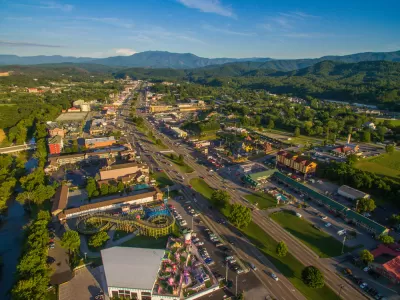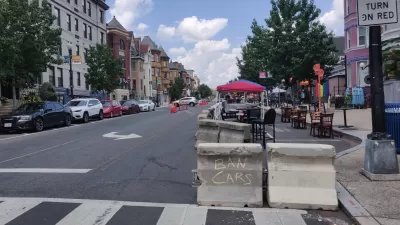It's not enough to focus solely on the design and engineering of streets when looking for ways to improve traffic safety. The fruits of the planning profession must be held to account, too.

"Academic programs in traffic engineering are often deficient in regard to paying inadequate attention to road safety concerns," according to an article by Eric Dumbaugh.
"A survey of 117 traffic engineering programs in the United States found only about one in five offer any formal instruction on traffic safety, and one may justifiably question whether there is much of any practical value contained in the few safety courses that are offered." While offering a scathing critique of the transportation engineering, Dumbaugh also notes the "significant reforms" made by the profession in the past decade, as evidenced by a large library of innovative design manuals.
Before planners start laying the blame for the country's dismal traffic safety record, again, at the feet of transportation engineers, Dumbaugh also offers this bombshell:
But these manuals call attention to what is, in my mind, an even greater safety consideration, one which has been largely ignored by professionals and academics alike. These manuals are centered on the idea that streets should be designed to address the uses and activities generated by surrounding development. It is not traffic engineers, but urban planners, who are responsible for determining a street’s developmental context. Our continued focus on the shortcomings of the traffic engineering profession leads us to ignore the manner in which planning decisions result in preventable traffic-related deaths and injuries.
Surprise: this article isn't really about engineers.
The least safe roads in communities around the United States are the direct result of local development codes, argues Dumbaugh. The concentration of retail along arterials, minimum building setbacks, and minimum parking requirements all contribute to the terrible rate of fatalities and injuries occurring on U.S. streets.
As a traffic prescription for planners to make a meaningful and effective contribution to improved traffic safety, Dumbaugh makes a comparison to the military concept of "defense-in-depth."
The effectiveness of our entire suite of defenses hinges on the policies and practices adopted by planners, such as the regional development plans that determine where future growth will occur and the zoning ordinances and subdivision regulations that govern its configuration. They establish the context in which our other layers of defense necessarily operate. And far too often, these development decisions are made with a blissful disregard of their ultimate safety consequences.
The article is also scheduled for an appearance in Transportation Alternatives’ Vision Zero Cities Journal as part of the 2020 Vision Zero Cities Conference, Oct. 19-23. The article includes more detail and a particularly cogent case study of U.S. 441, where it cuts through the city of St. Cloud, Florida.
FULL STORY: Worst Practices: How Urban Planning Fails Vision Zero

Planetizen Federal Action Tracker
A weekly monitor of how Trump’s orders and actions are impacting planners and planning in America.

Vehicle-related Deaths Drop 29% in Richmond, VA
The seventh year of the city's Vision Zero strategy also cut the number of people killed in alcohol-related crashes by half.

Map: Where Senate Republicans Want to Sell Your Public Lands
For public land advocates, the Senate Republicans’ proposal to sell millions of acres of public land in the West is “the biggest fight of their careers.”

The Ratio of Older People to Children Grew in Every State
Older adults outnumber youth in 11 U.S. states.

LA Transit Ridership Plummets Amidst ICE Raids
LA Metro’s bus and rail lines are seeing up to 15 percent lower ridership in the wake of violent immigration arrests.

A New Texas Neighborhood is Powered by Geothermal Energy
The 7,500-home development claims to be Austin’s ‘first zero energy planned community.’
Urban Design for Planners 1: Software Tools
This six-course series explores essential urban design concepts using open source software and equips planners with the tools they need to participate fully in the urban design process.
Planning for Universal Design
Learn the tools for implementing Universal Design in planning regulations.
Heyer Gruel & Associates PA
JM Goldson LLC
Custer County Colorado
City of Camden Redevelopment Agency
City of Astoria
Transportation Research & Education Center (TREC) at Portland State University
Camden Redevelopment Agency
City of Claremont
Municipality of Princeton (NJ)





























